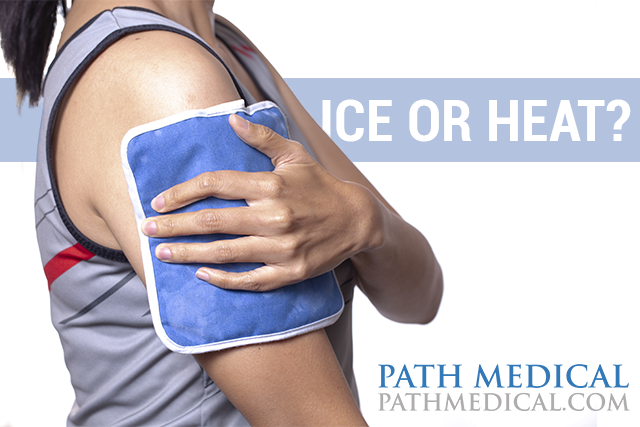When to Ice or Heat an Injury

Icing or heating an injury, also referred to as cryotherapy and thermotherapy, are quick and affordable ways to get instant relief at home from injuries and pain. While everyone can benefit from quick relief, not everyone has their facts straight when it comes to choosing one over the other.
Knowing the benefits icing or applying heat to specific areas of the body can make all the difference. In fact, it can be the difference between getting the relief you’re looking for or suffering from further pain. If you’ve ever asked yourself whether you need to apply ice or heat and didn’t know the answer to your question, read on…
Thermotherapy: benefits and uses
Thermotherapy, or heat therapy, is a form of relief used by applying heat to a particular area of the body. It is best used for conditions such as muscle pain, stiffness from stress and chronic pain. By increasing the temperature of a particular area you are increasing blood flow and improving flexibility, and it is best used prior to physical activity involving the muscle.
Heat therapy should never be used after physical activity and should never be used on open wounds or inflamed areas. Heat therapy is most useful when applied for longer periods of time, around 15 to 20 minutes,frequently throughout the day. Heat can be applied using heating pads, steamed towels, saunas or warm baths.
Cryotherapy: benefits and uses
Cryotherapy, or cold therapy, provides relief from injuries where the body is experiencing inflammation, redness, heat and swelling. An example of a good situation where cryotherapy is useful is for pulled muscles or IT band syndrome. By increasing the temperature of a particular area, you help calm down superficial tissue that is swollen, stop bleeding and reduce pain. Cold therapy is best applied immediately after an injury and within the first two days.
Cold therapy should not be applied directly on the skin. It is best to cover an ice pack with a towel in order to avoid damaging the skin. Cold should be avoided if you have stiff muscles, joints, or poor circulation. People commonly mistake lower back and neck pain symptoms and applied cold, but applying cold to trigger points can increase pain. Cold therapy is best applied for short periods of time, around 10 to 15 minutes, several times a day.
Bottom line:
Heat and cold therapy are used for very different reasons. The most important step to take before deciding which route to go is to analyze your symptoms and then decide what will work best for pain relief. In some cases, such as people with arthritis, both hot and cold therapy will help provide relief. Heat and cold are only quick ways to get relief from symptoms, if symptoms persist you should see your doctor for further direction.


